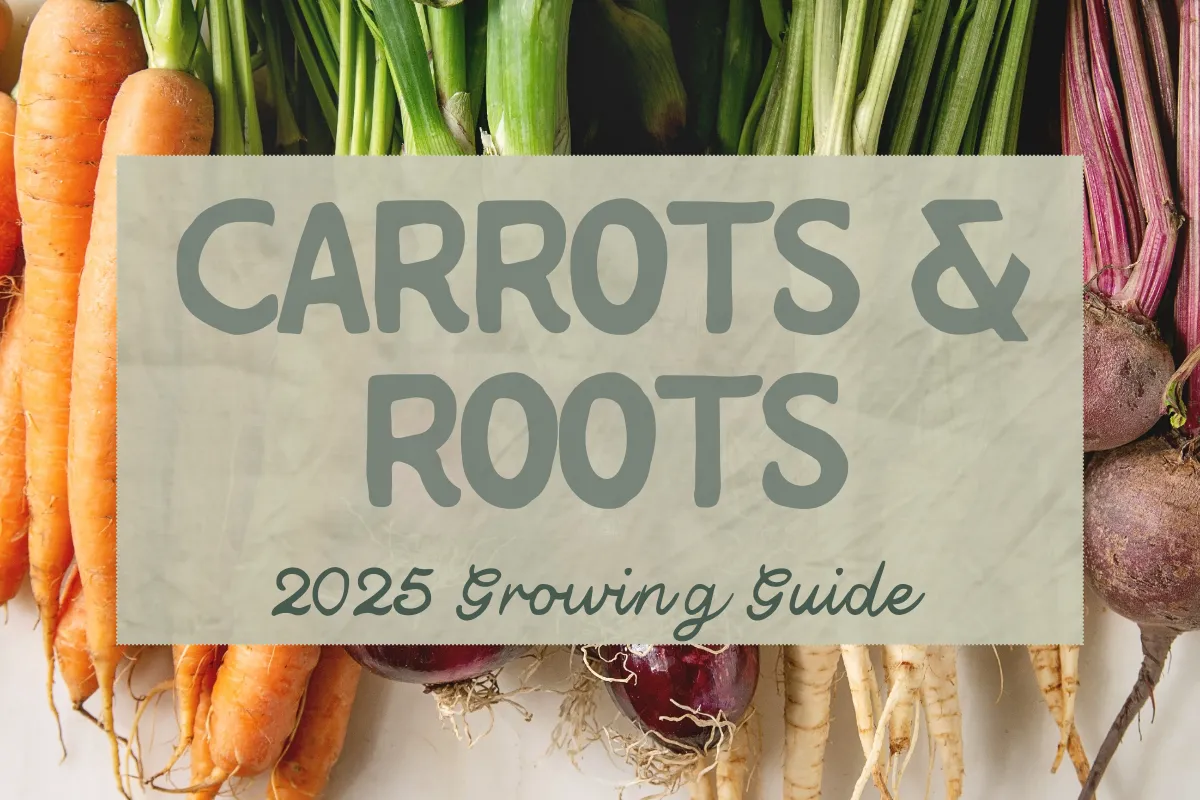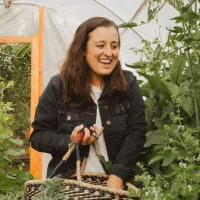
All About: Roots

🧬 Family Traits: What These Plants Share
Root crops thrive in cooler soil, grow slowly and steadily, and store their flavor deep underground. They’re some of the most rewarding crops for mountain gardeners—resilient, colorful, and built to last through cold snaps.
Shared characteristics:
Cool-season friendly
Direct sowing preferred (except for leeks and onions)
Require loose, well-drained soil and consistent moisture
Easy to store and preserve post-harvest
Roots run deep—and so does their flavor

🪴 How to Grow Roots in Mountain Conditions

🌱 Seed Starting
Direct sow most root crops 2–4 weeks before last frost
Thin early and consistently to give roots room to swell
For leeks and onions, start indoors and transplant later

🌦️ Sowing & Transplanting
Keep soil evenly moist for good germination
Use row cover to protect from flea beetles and root maggots
Leeks: Transplant deeply into trenches for long white shanks

🍽️ Feeding & Soil Support
Roots prefer well-drained soil enriched with compost—not fresh manure
Avoid excess nitrogen (can lead to leafy tops and poor roots)
Mulch to retain moisture and regulate temperature

✂️ Harvesting
Carrots, beets, and turnips: harvest when roots are usable
Leeks: harvest when shanks are 1–2\" thick
Curing: Let roots dry slightly post-harvest before storage
🥕 The Veggies in This Group
Beets
Fast-growing, cold-tolerant, and sweet when roasted.
🌾 Seed Saving: Biennial—requires overwintering and isolation for seed saving.
🌱 Varieties We’re Growing:
Bold & Beauty Mix
Golden Grex
Kestrel
Leeks
Long-season alliums with frost tolerance and deep sweetness.
🌾 Seed Saving: Biennial. Isolate for purity.
🌱 Varieties We’re Growing:
King Sieg
Lincoln
Siegfried Frost
Onions
Sweet and storage-worthy.
🌾 Seed Saving: Biennial.
🌱 Varieties We’re Growing:
Yellow Sweet Spanish
Carrots
From High Desert Seeds, grown in Paonia, CO.
🌾 Seed Saving: Biennial. Isolate from Queen Anne’s lace.
Radishes
🌾 Seed Saving: Easy! Edible pods before full maturity.
Turnips
🌾 Seed Saving: May behave as annual or biennial.
Celeriac
Full of roasted flavor and easier than celery.
🌾 Seed Saving: Biennial.
🌱 Varieties We’re Growing:
Monarch
Root Parsley
🌾 Seed Saving: Biennial.
🌱 Varieties We’re Growing:
Arat
Garlic
Fall-planted for summer harvest.
🌾 Seed Saving: Clonal from cloves.
🍴 From Garden to Table: Why They Matter
Roots are incredibly versatile in the kitchen. Roast them, shred them, ferment them, or boil them into brothy goodness—they hold up to almost any method.
Preserving Tips:
Store in damp sand, crates, or plastic bags in fridge
Freeze grated carrots or blanched beets
Ferment radishes, beets, or turnips for gut-healthy sides
Key Takeaways
Discover top root vegetables for mountain gardeners including beets, leeks, and carrots
Learn planting, soil, and moisture tips tailored to high-altitude climates
Explore seed-saving methods for root crops like onions and radishes
Use frost-friendly varieties and row cover for cool-season success
Get post-harvest storage tips like curing, fermenting, and root cellaring
Copyright 2023-2025 Wiggle Worm Gardens
Visit Our Sister companies
Fourth Street Farm: edible landscaping and raised bed garden design and installation
Ground Up: Soil health and compost tea

